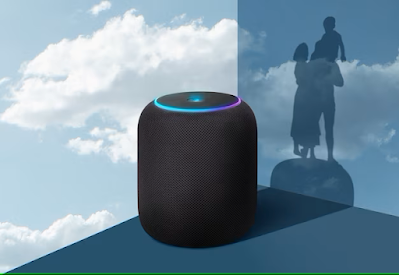A smart speaker is a device that responds to the voice commands a human give. It has microphones built-in so that it can listen for an activation word, take the voice request and then perform the right action, which can range from giving a voice reply or controlling a smart device.
All voice assistant works on cloud-based software which means the voice of the individual by whom the command is given, is sent to a cloud server for processing, and the result is thrown out through the smart speaker.
The advantage of this system is that there are few software updates to handle, and new features appear instantly on all connected smart speakers. It also means that smart speakers don’t become obsolete very fast.
The above-listed applications of smart speakers and the growing popularity of smart speakers are the primary reasons for the growth of this market. According to a research report by Astute Analytica, the Global Smart Speaker Market will register a CAGR (Compound Annual Growth Rate) of 18.3% during the forecast period from 2023 to 2031.
How does a smart speaker work?
Smart speakers are always listening out for their “wake word”. This will vary from one model to another and depends on the virtual assistant they use. If they use Alexa, then it will just be “Alexa” by default, while those with Google’s virtual assistant use “Okay Google” and “Hey Google”.
Once they hear the wake word, smart speakers then begin listening to what users say to them. So, if the user wanted to listen to some music on Amazon Echo, for instance, the user just say, “Alexa, play my Daily Mix from Spotify.”
Top-Rated Smart Speakers
- Apple Home Pod
The Apple Home Pod is considerably pricier than many smart speakers on the market but for those used to using Apple products, it may be the preferred choice. Thanks to Siri, one can use the Apple Home Pod to set reminders, make hands-free phone calls and play music throughout the house with multiple connected devices.
- Amazon Echo
The Amazon Echo range is one of the most popular and varied of any available. Having first launched back in 2015, the Amazon Echo was one of the first smart speakers available to the public. Since then, it has been upgraded and improved and is now in its fourth reincarnation.
- Sonos Move
Water and dust-resistant, the Sonos Move is designed to be portable. Because it is wireless, it can also be used in or outside the house and Sonos’ Trueplay feature will use the microphone to assess its surrounding and then balance the audio for the best quality possible. Both Google Assistant and Alexa are built-in so users can use whichever virtual assistant the user prefer.
- Bose Home Speaker
The Bose Home Speaker 500 also offers the user choice between Google Assistant and Alexa. It has all the main smart speaker features and can be connected to other Bose smart speakers to create a multi-room sound system. The design is sleek with an anodized aluminum body and a color LCD to show what song, radio station, or podcast is playing.
- Google Nest
Powered by Google Assistant – Google’s answer to Amazon’s Alexa – the Google Nest Audio is the latest smart speaker from the company and is designed to give “real-time” answers to questions. It has most of the other key features, too, such as connecting to an assortment of Google Home accessories, playing music, and it can support multiple users.
Source:- Smart Speaker Market

Comments
Post a Comment